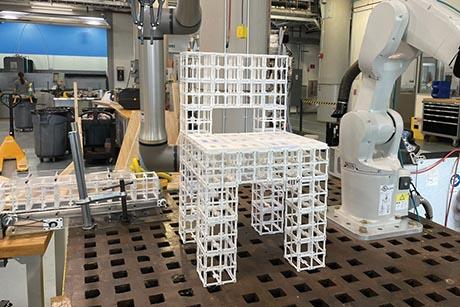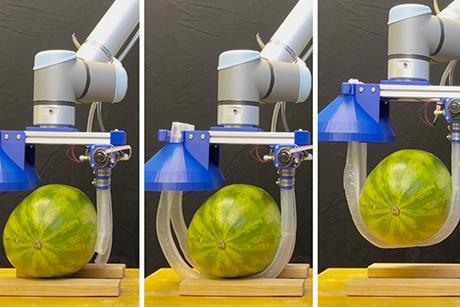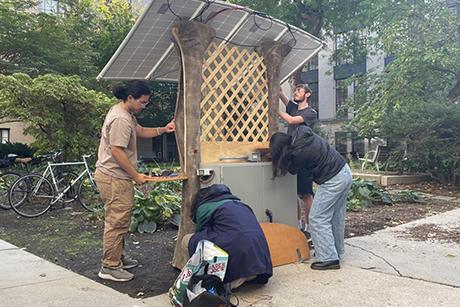Retired mechanical engineer puts hundreds of parts to use in kinetic sculptures
After 31 years engineering medical solutions for the National Institutes of Health (NIH), Seth Goldstein ’61, SM ’62, SM ’63, ScD ’66 launched a second career as a sculptor—even landing him a place in a 2008 exhibit at the American Visionary Art Museum in Baltimore.
“My work at NIH gave me experience in many different disciplines,” explains Goldstein, who as chief of the mechanical engineering section helped develop devices including a miniature fiber optic probe that could measure the pH in the beating heart of a dog, and a miniature probe that could measure electrical signals from a single cell in the human brain cortex during neurosurgery. “It also created a desire to do things that are completely my own, that I didn’t have to answer economically for. And when I was thinking about retirement, I decided that what I really wanted to do is make some very sophisticated kinetic sculptures.”
Since retiring, Goldstein has completed four such multi-year projects, and not only do they move—as, by definition, kinetic sculptures must—they all achieve a specific goal. It was his wife, Paula Stone ’72, SM ’73, PhD ’77, who had the idea for Why Knot?, his first sculpture. “Out of the clear blue sky, she said, ‘Why don’t you make a machine that ties a neck tie?’ Bingo! That was what I needed, and that inspired my work for the next three years.”
Why Knot? was one of his most difficult projects, Goldstein says—what started as a series of gears and levers controlled by three motors became 10 motors with 500 steps to tie and untie the necktie. “I was never sure that it was going to work because it was an all or nothing thing. If I couldn’t get it to work completely, I had nothing.”
The knowledge and determination needed to complete the first and all subsequent projects were fostered in his time at MIT and at the NIH, he says. “As it turns out, I didn’t have to learn very many new skills when I made these sculptures, because I made a lot of different things at NIH. Also, MIT was darn hard. And by and large, most of these sculptures were darn hard. I think the discipline to get things done certainly got enhanced at MIT.”
From the Rube Goldberg Exercise Bike that dispenses cookies, to Ro-Bow, a mechanical violin player, the projects all have hundreds of parts, many of which Goldstein buys and others that he has saved over the years. “I’m not a hoarder, but I tend to save a lot of stuff in my basement, and invariably I end up using it. Of course, if you threw it out, then the next day that’s when you want it.”
Hear more about Goldstein’s projects and see them in action in a video interview.


